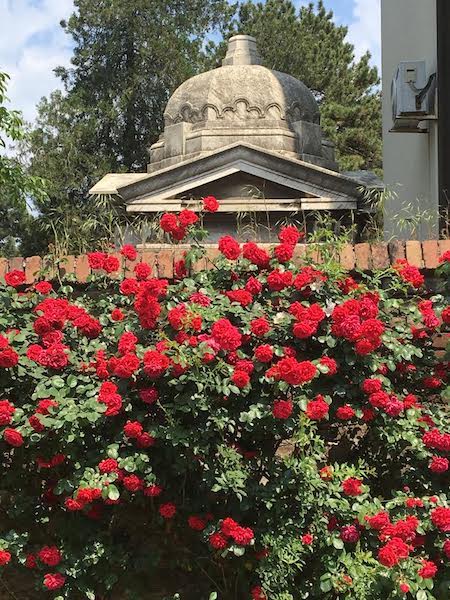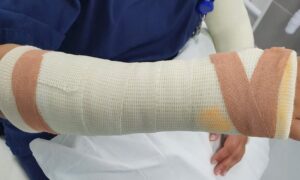I ended up in Belgrade by chance this spring.
I had been in Germany and was looking for somewhere to go that was not in the Schengen Area, but still in Europe. It needed to be inexpensive to fit my budget, and easy to get to.
Belgrade fit the bill.

I’m a true digital nomad. I’m not quite a tourist, but neither am I a resident as I go in and out of the Schengen Area, traveling on an American passport. Which is how I spent two months in Serbia, from the end of March till the end of May.
The thing that struck me is, Belgrade is not a beautiful city; not a touristy city. But it’s waking up and breaking out of its Communist past on the way to becoming a destination for pretty people looking for something new.
Its art-filled public spaces, well-maintained parks, and national cultural venues make Belgrade an up-and-coming tourist destination. Science enthusiasts will love the city’s undying devotion to its local hero, Nicola Tesla. (Elon Musk is a fan.) Sunbathers will find the beaches of Ada Ciganlija a relaxing place to soak up the rays.
And by the way, this is the only major city in Europe that sits on two rivers. The Danube and the Sava come together literally in the center of Belgrade. Entrepreneurs have made the most of that happy confluence, creating a celebrated floating nightclub scene on barges. There are a lot of hostels on barges, as well, so this is definitely a party city for the younger crowd.
But there’s more. Theatergoers can see critically acclaimed plays and operas at the National Theatre. History buffs. Clubbers. Shopaholics. Expats and digital nomads. There’s truly something for everyone.
IDEAL LOCATION
After saying all that, a moment for full disclosure: Belgrade doesn’t impress on first glance.
Belgrade doesn’t have the grandeur of Paris, the efficiency of London or the flavor of Rome, but it does have grit. It is a city caught in the middle of putting past wars behind it and leaving its scars visible for all to see in an effort to remember and learn from its history.
Traveling to Serbia, you quickly realized you’re leaving behind Western Europe physically and psychically.
I took Deutsche Bahn from Munich to Budapest and then continued my journey overnight from Budapest to Belgrade. The train from Germany to Budapest was clean, air-conditioned and had both wifi and outlets. The train from Budapest to Belgrade? Not so much. Mind you, I’m not complaining. It got me where I wanted to go and was dirt cheap.
Other than being awakened by a guard at the border for a cursory passport check, I slept pretty soundly until we arrived in Belgrade. The train station in Belgrade is tiny and has seen better days, but it has an ATM where you can withdraw Serbian dinar for a taxi, and that’s really all I cared about early that morning.

FIRST LESSON: JUST BECAUSE THE OUTSIDE IS UGLY DOESN’T MEAN THE INSIDE IS. MY APARTMENT IN BELGRADE.
A short cab ride took me to my AirBnB near the University of Belgrade. I was somewhat dismayed to find myself dropped off at a graffiti-covered apartment building in the brutalist Communist-era architectural style. My dismay turned to delight when I was given the keys to a newly remodeled unit decorated with colorful IKEA accessories and flooded with natural light.
It didn’t take me long to realize the Zvezdara neighborhood near the university in Old Belgrade, although somewhat run-down, is in an ideal location for a long-term visitor. Easily accessible by public transportation, there was a grocery store, pharmacy, and small shopping center just down the block.
A PARK AS METAPHOR

PHOTO BY BETH HOKE
But these niceties were nothing compared to the beauty of a small park nearby. The park is actually a cemetery that pays tribute to the Liberators of Belgrade in 1944, both Soviet soldiers and Yugoslav Partisans.
The park is a fitting metaphor for Belgrade itself. The city’s war-ravaged history is openly on display, but its commitment to the future can be seen in the investment it is making in its citizens’ quality of life.
Walled in by hedges and rose-covered bricks, the park was peaceful in the mornings and filled with the chatter and laughter of small children and their parents in the evenings.
I spoke with a 5-year old girl who was learning English at school and was able to carry on a basic conversation. Another resident jokingly asked me not to let on to the Serbian men that it is much less common in the United States to see fathers playing with their children outdoors after work.
On my daily walks with the dog, I had the chance to speak with, and observe, the neighborhood residents. One explained to me that Serbians don’t dislike Americans, but they are not fans of our government, past or present.
In a culture that never forgets its heroes or its grudges, the American/NATO bombing campaign in 1999 during the Kosovo War is only the latest scar.
Years of heavy bombing by the Austro-Hungarian Empire during World War I and both the German and Allied forces in World War II left the city devastated.
After 80 years, all of that is starting to yield to the future.
After World War II, it rallied, experiencing a period of rapid growth. A planned municipality built on swamps and marshes became New Belgrade, a center of industry and innovation.
Divided by the Sava River, Old Belgrade and New Belgrade are connected by Branko’s Bridge, across which 90,000 vehicles travel daily, transporting residents and tourists between the city’s historical center and its modern malls, apartment buildings, and entertainment complexes.
Honoring the past while not dwelling on it

A MEMORIAL TO THE LIBERATORS OF 1944 (Photo by Beth Hoke)
As a digital nomad, I had no real expectations coming here. I’ve kind of grown out of having expectations. I know better than that now after going to Croatia with limited expectations and loving it, then going to Naples with high expectations and hating it.
What I found in Belgrade is a city with a great transportation grid, shopping that’s equal to any other medium-sized European city and a thriving entertainment scene.
Because Serbia, like Croatia, was once part of Yugoslavia, an East Bloc country, I had expected Belgrade to be more “Communisty.”
But other than the Soviet-bloc architecture, and the occasional left-over Yugo, it just feels like they honor their past, while not dwelling on it.
The details:
• Belgrade is “Beograd,” or White City, in Serbian. It’s one of the oldest cities in Europe.
• This is a fairly large city with a total population pushing 2 million, according to the tourism website.
• Skadarlija is the bohemian street if you want to hang out and listen to music.
You can see more about Belgrade here on Serbia.com.

BETH
About the author: Beth Hoke rejoined the expat life after spending her childhood in Europe and the United States, then settling in Chicagoland to raise two daughters.
Now an empty nester, she is roaming Europe, armed with a TEFL certificate and an online position teaching English for EF.
Beth has been traveling around Europe for more than a year. She’s filed posts for Dispatches Europe from at least six countries including Italy, Germany, Croatia, and Madeira, Portugal.














